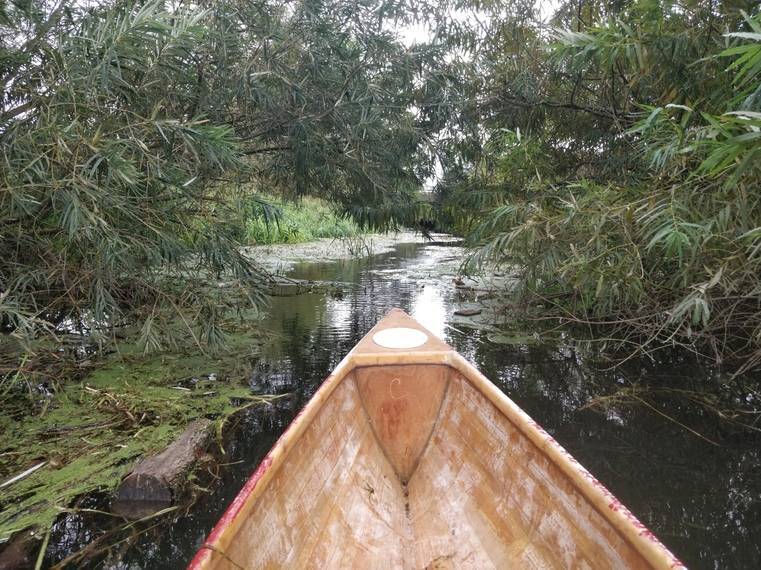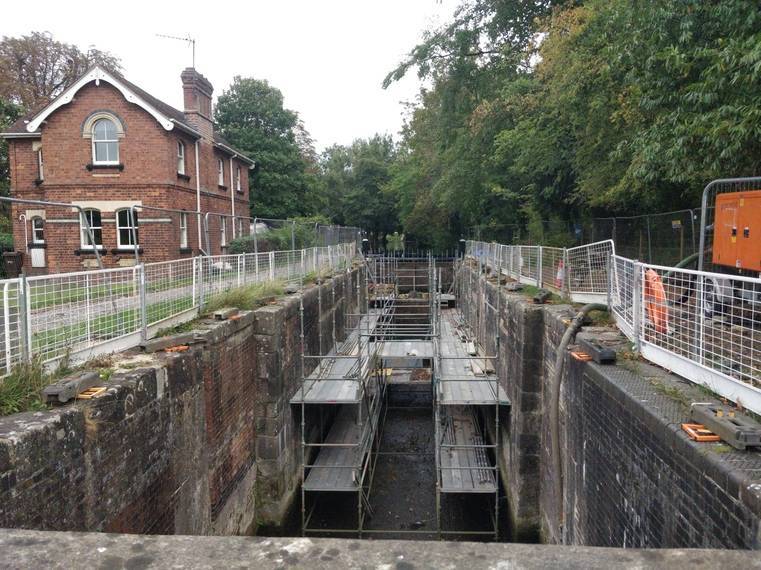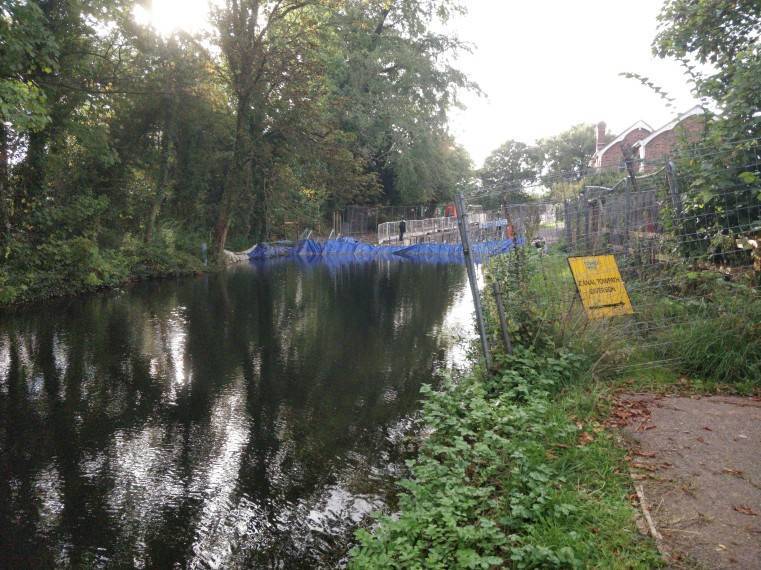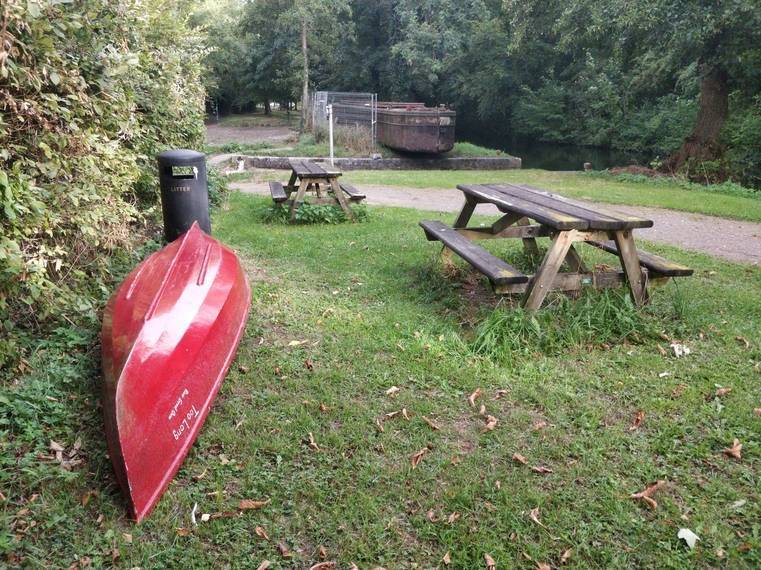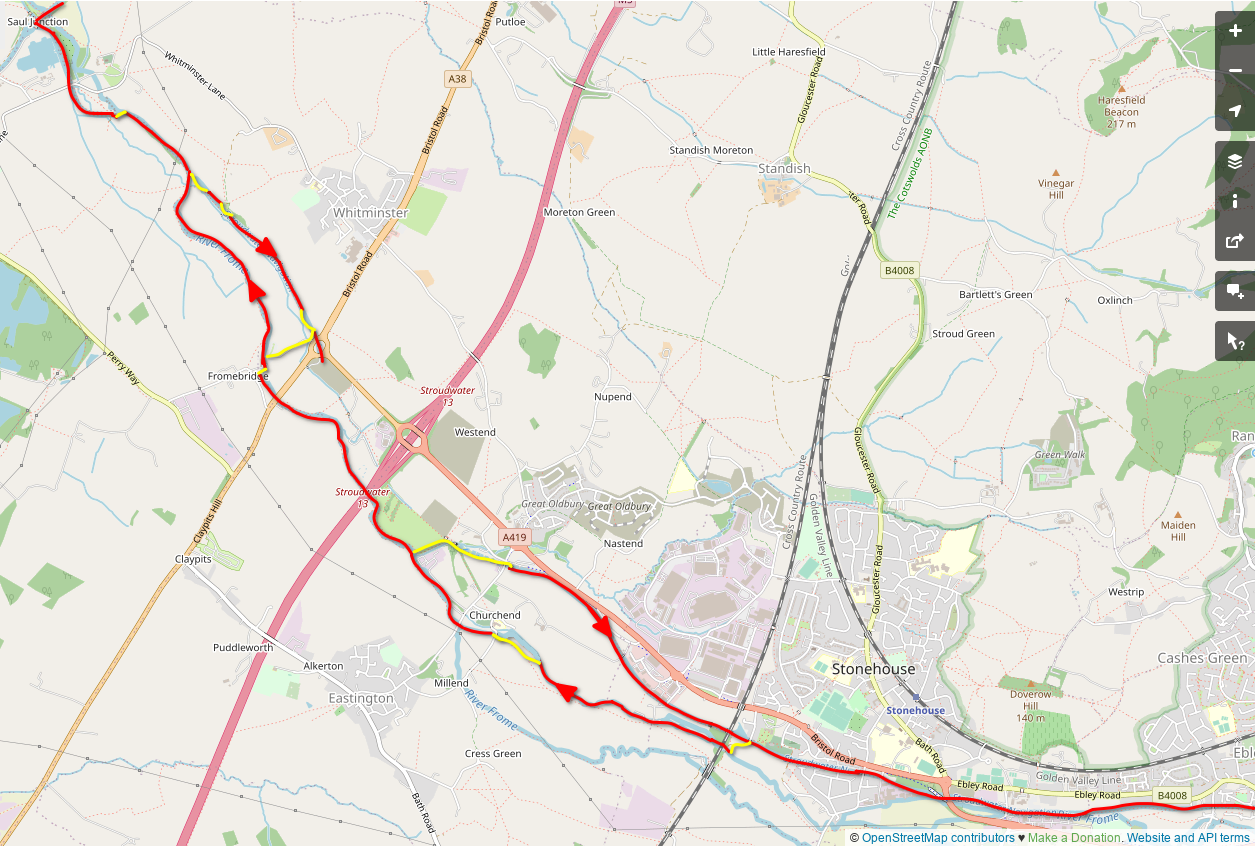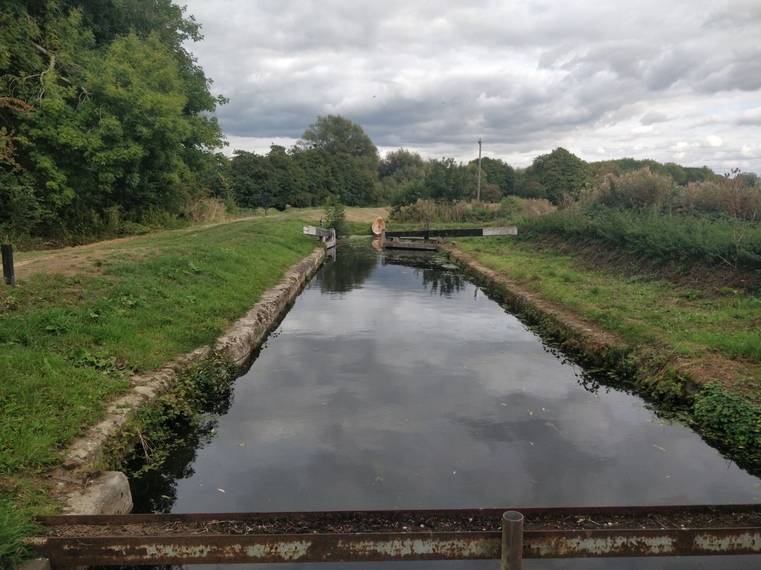-
Posts
453 -
Joined
-
Last visited
-
Days Won
1
Content Type
Profiles
Forums
Events
Gallery
Blogs
Store
Everything posted by Francis Herne
-
That will be lack of HTTPS, yes. With unencrypted HTTP it's possible for parties between the client and server to monitor and intercept requests - either just to snoop, or to pretend to be your server and return something malicious instead of what was requested. Examples I'm aware of in the wild: * operators of public WiFi networks logging users' device info and the pages they visit, then selling the data. (this one also needs encrypted DNS to fix entirely, but browsers are working on that too). * unscrupulous ISPs (looking at you, Virgin Media) returning fake ad-loaded search pages when DNS lookup fails [i.e. there shouldn't really be a page at the address at all] * poorly-configured public WiFi enabling other users to interfere with requests, inserting viruses into the response. * governments (our own, the US and China's among many others) forcing ISPs to let them monitor or interfere with traffic as above. Chinese entities have repeatedly used a technique called 'BGP hijacking' to redirect traffic between other countries that would never normally pass through China so they can do so. None of these are possible with HTTPS. The nature of the content you intend to serve is moot because the data is tampered with before you receive it and after you send it back. The browser vendors and other large companies don't gain at anyone's expense from using HTTPS - in fact as above it makes certain tracking techniques impossible. Certificates are free these days. It's just standard good practice. I'd also be happy to help with sorting it out, your site's a great resource and it would be a shame to lose it.
-
I'm not sure about that, if it's keeping the bitumen squashed onto the hull. On BCNS' workboat Phoenix, the open hold was floored with oak planks bedded very firmly onto a layer of tar on the baseplate. When we prised one up (not easy) to have a look, there was no sign of internal corrosion at all after 25 years despite the hold usually sitting with an inch or two of rainwater in it. [unfortunately the external corrosion and wear was quite bad so a lot of work was needed anyway...]
-
With such a long and narrow 'nose' at the top of the stem, I think you'd be better off with a more notched-shape fender: The wide straight one you have could go lower down to protect against piling etc., or just sell it on. Alternatively, I'd be tempted to try hanging it vertically rather than horizontally, something like the rubber thing on recent Black Prince boats: Not sure if it could be secured well enough laterally.
-
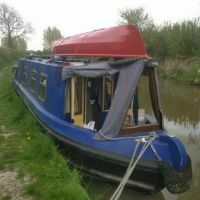
Ellesmere Port to Liverpool - across the Mersey
Francis Herne replied to Ewan123's topic in General Boating
Good luck with the journey (and the weather)! Seems a good adventure. I realize now that was you moored next to me last week, can't be many turquoise narrowboats planning to cross the Mersey. -
I heard pretty much the same (with the price an order of magnitude lower) about Blower's Green pumphouse. Offer from a party declined, went to auction, same party won it for a much lower bid. In that case at least it's again not really a fault of CRT - as a charity they're obliged to follow due process when selling off assets, and the Charities Commission is strongly in favour of public auctions for that to avoid any backhand dealing. If they wanted to accept an offer for a fixed sum they'd need a thorough valuation, a lot of paperwork, and they'd probably still get accused of selling it 'under the table' as they have been with other properties in the last few years.
-
At least for me, your second post quoted answers the first one. I don't care much about individuals, unless they're hogging a spot in a high-demand area with no spare moorings. I do see the requirement to move frequently over a meaningful distance as a way to differentiate between those who want to live on a boat, and use it as a boat , and those who really want cheap static accommodation. As such I think it needs to be enforced better (and have a significantly higher bar than the '20 miles') because in recent years it's clearly failing to do that. Raising the 'surcharge' doesn't differentiate at all between those groups, until it goes above the price of housing in major cities by which time many of the 'boat for its own sake' people would be priced out too.
-
It seems a meaningless question to me (as a continuous cruiser myself). If people consistently move just once every 14 days, to my mind they'd have to move many miles each time to be in the spirit of things. If you're travelling hundreds of miles overall and feel like moving a few yards around the corner one time, who cares? It would matter if CRT tried to rigidly police every movement in isolation, but they don't. Taken over months it's obvious who's really moving and who's shuffling.
-
It does. That's one of the reasons Phoenix was in such a bad way, moored just downstream of the pump outlet (where the inlet is right by the old tar distillers).
-
Obviously one, you mean. The foam is what absorbs the memories. Not had anything chucked me on Lark. Chap with a catapult was pinging stones at me at Diglis when I took the canoe to poke around the oil dock, autumn 2022. Last summer a couple of kids on the bridge outside Netherton Tunnel by the engine house mimed throwing stones at us on Atlas & Malus, but nothing real. I heard later they had chucked pebbles at another boat. Perhaps they appreciate the historic ones! I've thrown all sorts of junk into the workboat mid-channel from the towpath, or had others throw it at me.
-
Looks like it. Not exactly sympathetic... HNBC page claims she was motorized (as Kidsgrove), maybe stripped out during the latest rebuild or surely they'd have mentioned it! (being naive as usual) Is the argument that a day boat isn't a butty? In later working life and as she is now, with a cabin on, describing her as a butty seems reasonable to me. Built at Northwich seems correct? Obviously "Small" is nonsense for a non-GU boat.
-
Another Yarwoods butty with big steel 'undercloth' cabin: LMS station boat 56 'Naples'. https://narrowboats.apolloduck.co.uk/boat/yarwoods-northwich-butty-for-sale/759510
-

Thetford C2 cassette - manual flush not working.
Francis Herne replied to Northener's topic in Boat Building & Maintenance
As per the post above, are you sure that's not the electric variant? On my manual-flush C2, the location of your 'press' button has a clip-in blanking plug. Flush is by rotating the second, larger knob on the other side forcefully clockwise. It doesn't always spring back all the way (feels like some component underneath is rotating that shouldn't be) so has to be turned anti-clockwise to its limit first. -
A nicely shaped boat. @Grim Reaper was looking to buy it a couple of months ago per https://www.canalworld.net/forums/index.php?/topic/108856-semington/#comment-3031597 -- must have fallen through?
-
Also at Titford were the Alfred Matty boats carrying white phosphorus sludge from Albright & Wilson to the dump pit at Rattlechain Lagoon. Filled directly into open holds (with sealed bulkheads) and pumped out at the other end. As with the tar, quite a lot of it got into the canal which is reputed to have spontaneously caught fire quite often. Both BW and the EA used tanks in maintenance boats for collecting sewage from Elsan points and lockkeepers' facilities. Boats were used in the 1990s for laying fibre-optic cable, with big spools in the hold. There are a couple of odd-shaped work flats moored opposite Stretton Wharf, I guessed for transporting lock gates at an angle to be 'in gauge', but not sure.
-
This post cannot be displayed because it is in a forum which requires at least 10 posts to view.
-
Bear in mind the rule for continuous cruisers to "satisf[y] the Board that the vessel to which the application relates will be used bona fide for navigation throughout the period". In recent years CRT have interpreted this as a range of 20 miles (while moving a reasonable distance every 14 days or less), but have stopped publishing that guideline in the last year or two, I suspect as a precursor to applying more stringent criteria. In the past, BW and I think CRT have demanded much greater distances of movement with mixed success. You will find it quite hard to find spots to moor in London, particularly for a large widebeam boat, because a very large number of people have had the same idea already. Most of the towpath has moored boats end-to-end, with narrowboats often moored two abreast. Services like water, Elsan and pumpouts are congested for the same reason. CRT have begun 'solving' this for visiting boats by introducing fairly expensive pre-bookable moorings, with a limited number of days per boat per year. There is currently a consultation on introducing several more areas of this. Of course this further reduces the space available for free mooring on the towpath. The number of people "continuously cruising", but really just shuffling back and forth within London over the shortest possible distance, is increasingly being seen as a problem to be solved by CRT (and a significant proportion of boaters, including some on this forum and frankly myself). It simply isn't viable for half the population of London to live on the canals, and ludicrous housing costs are pushing ever more people that way. I would expect further changes of some sort in the next few years to make this less attractive - whether that's further increases to the CC surcharge, continued expansion of paid towpath moorings, a stricter interpretation of "bona fide navigation" or all of the above. Planning for the status quo would be unwise. The proposed Bedford - MK canal is very aspirational and has no chance of being built in the foreseeable future. No significant work has been carried out on it besides some improvements to the river at Bedford. As a Cambridgeshire native, I would like to see it too! A narrowboat can get there the long way round via Northampton but not a wider boat. I think antipathy to wide boats is overstated generally. Careless mooring of them does cause much more trouble than narrowboats as it's much easier to obstruct the channel. Disputes over mooring spaces might be an issue within London but not elsewhere. A lot of people here dislike 'widebeam narrowboats' because they're ugly and usually very badly designed as boats for navigation, or because their owners are often interested in them as a residence first and as a boat a firm second, but no-one is likely to confront you over that. You should consider that a big heavy boat will be physically harder work single-handed (mooring in crosswinds and the like, probably not viable to rope through locks so you'll be climbing ladders a lot). Manageable if you're reasonably fit, but narrowboats are easier!
-
It's always possible for something to go wrong. For instance those square wooden posts tend to rot/wear just above ground level to leave a tapered slot that's tried to grab my rope. I don't usually carry a knife, maybe I should. There's one in my 'ticket drawer' though.
-
From the A38 roundabout, it's a fairly short walk across to Fromebridge Mill, at least if you're not carrying 30kg of plywood canoe. The mill is now a pub/restaurant. I stop for a drink and some chips, then slide Too Long down quite a steep bank into the river in front. A couple of people drinking outside help me with it. For some reason I don't take a picture... A few yards round the corner is the foot of the mill weir. There's a small weir flowing swiftly behind a tree, and a much larger stone-and-concrete one that's dry in these conditions. Scramble out, drag Too Long onto the big flat area at the top, get back in and continue. (Top of Fromebridge Mill weir) The river here is a bit smaller than before, flowing mostly through open pastures, shrubby willows dotted along the banks. There's some weed at the edges but it's not in the way much. First bridge is the A38. It's oppressive, you wouldn't get a narrowboat under here, but not that low. Some cattle wonder what this peculiar red thing is. The river is a similar width here but getting shallower; occasionally I'm scraping over sandbars. Then the M5. The canal is to share this bridge, lowered a couple of feet below the river in a concrete trough for headroom. The Environment and Highways Agencies' quibbles about this have been the main source of delay in planning. In these conditions, I reckon Lark Ascending would probably have scraped under as it is. Similar to Dunn's Bridge, lower than the Droitwich culvert. Above the M5 the channel keeps narrowing. There's still some depth but the flow is increasingly fast. In some places, low branches almost reach the opposite bank - it's awkward to squeeze the canoe around them when what it really wants to do is snap around and shoot off downstream. Where Oldbury Brook merges, there's a little section of rapids. Water tumbling over brick-sized stones. I'd wondered if I could paddle up the brook to reach Westfield Lock, but it's far too overgrown. Time for a walk again. Looking beyond the rapids, the river is flowing quite fast but looks possible to paddle downstream. We'll get back to that... Across the field, there's a bridge over nothing. There should be a canal underneath but you wouldn't know it. Nor on the other side - only some scrub. This is the site of Westfield [now John Robinson] Lock, since dug out by the WRGies and others. It'll be a very different view now. Walking south from here along what was, and will again be, the canal towpath. Shortly after crossing the brook it becomes obvious - the channel has been dug out; it's almost dry and filled with standing reeds but still recognisably a canal. A plaque on the reconstructed spill weir reminds the reader of this. An empty lock, rebuilt but without gates, some more dry channel, a modern bridge but in more sympathetic style than those before. The lock on the other side is full of scaffolding and has a blue plastic dam across the top. Presumably for repairs to the walls, but no-one is around to ask. It's almost 5pm, and a few miles to walk home. Too Long can stay here until the morning. (to be continued)
-
I was sure I'd taken a couple but can't find them anywhere. I moored right next to it and walked about on its deck. Definitely floating; it bumped around slightly on its chains in the wind. The picture below was taken by Bob Hallam last year. I hope he doesn't mind sharing it here. The blue wheelhouse belongs to another boat behind.
-
A map. The mile north of Saul is omitted for being obvious. Red by water, yellow by portage: we're only at the first yellow dash from the top. Someone familiar with the area might foresee the miserable bit. This River Frome, like some of the others, is a very pretty little river indeed. It's deep for its size and clear, tree roots dipping into the water, little fish skittering about in the dappled light. It's not long before the canal resumes on the other side and I get out to see if it's still there. It is. Too Long follows me, a bit reluctantly, over the bank into rather murkier water. Soon a pipe culvert, carrying a farm track, blocks our way. A lone flip-flop was floating in the canal and comes along for the ride. There's almost no litter here, the BCN's a distant memory. The channel continues on the other side, but is more choked with weed. It starts out as floating stuff that trails from Too Long's bow and gets tangled around my paddle. There's a fairly low gas pipe, then a nice arched bridge in good repair. The weed thins out a little, but not for long... Soon after the bridge I have to start slaloming around clumps of standing reeds, which grow and merge until the canal is solid with them. Too Long isn't floating at all now, just scraping over bent reeds like a poorly-designed sledge. It's not far to the A38 stank but this is just impossible. I give up, climb out and lift the canoe onto my shoulders. (this is a little before that point) It's only a couple of hundred yards of walking before a shiny gate gets in the way. Humping a 14ft canoe over it is a little awkward, but there's a lovely new canal on the other side! The channel is perfectly clear, the bridges are spotless, the towpath doesn't seem finished. I wonder if I'm the first boat on this part of the canal? Who knows. Drat, I've run out of new canal already. Good thing they're digging more while I wait! (this was actually the archaeological survey, the main dig still hasn't started as of early 2024). to be continued, again...
-
Inspired in both content and style by @davidwheeler's reminiscences (linked), an account of a more recent trip on the Stroudwater and River Frome in September 2022. I did post a few of the pictures elsewhere. Moored by a half-sunken old mud hopper, a mile north of Saul Junction. On the towpath side there's no view at all - overgrown reeds are pressed hard against every window. Yesterday morning it made no difference, every other direction was white fog, but that cleared in time for the sun to set behind the pylons. Today however it's bright, clear to begin with, a bit chilly in shirtsleeves but paddling into the wind soon cures that. Under the swing bridge at the Junction, after waiting for some rowers to pass the other way, then a left turn onto the Stroudwater. Lines of moored boats both sides - some shiny, some rusty. The marina entrance: "No canoes or paddleboards beyond this point". I wasn't going in there anyway. There's a very low bridge. Too Long''s upturned bow bumps against it. I shuffle forward; the stem dips slightly and grates under the concrete. Flat on my back, pushing my hands against the poorly-finished bottom of the bridge, it's just possible to scrape the canoe through. [Why don't I have a picture of this one? Not sure.] Clear water for a couple of hundred yards, then a reedbed from bank to bank, just for a few yards. With a bit of effort I can slide over it. Another bridge. This one has steel beams, even lower than the flat deck of the first. There's only the lock beyond it before the canal ends, it would be easier to carry the canoe from here, but where's the fun in that? Crawl to the bow, slide that under the first girder, crawl to the stern and do the same. Repeat for the second, then a separate beam that's there for no apparent reason. Paddle 100ft to the other end of the lock and this stretch of canal is over. It's a short hop into the Frome. (to be continued in a bit)
-
One of these hoppers survives unmodified, tied on the towpath halfway from Saul Junction to Parkend Bridge. It's full of mud and reeds, and the wheelhouse is long gone, but still somehow afloat. I also passed one of the motorized ones heading down the canal to Davis' yard in October 2022, maybe CHUB as above.
-

Low Voltage Dropout Linear Regulator
Francis Herne replied to Naartjie - Duck Hatch's topic in New to Boating?
My B525 doesn't seem to mind that at all. It does occasionally power-cycle when the fridge compressor starts up though... -

Glass Bottom Installation
Francis Herne replied to Withywindle's topic in Boat Building & Maintenance
I did wonder if one could build a canal submarine, and what CRT would make of it. Obviously it could only submerge in locks and exceptionally deep sections of canal or river.







